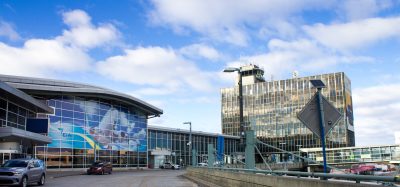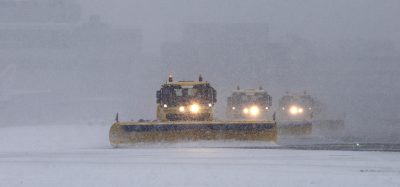Taking a leap forward in safe winter operations
- Like
- Digg
- Del
- Tumblr
- VKontakte
- Buffer
- Love This
- Odnoklassniki
- Meneame
- Blogger
- Amazon
- Yahoo Mail
- Gmail
- AOL
- Newsvine
- HackerNews
- Evernote
- MySpace
- Mail.ru
- Viadeo
- Line
- Comments
- Yummly
- SMS
- Viber
- Telegram
- Subscribe
- Skype
- Facebook Messenger
- Kakao
- LiveJournal
- Yammer
- Edgar
- Fintel
- Mix
- Instapaper
- Copy Link
Posted: 1 December 2006 | Tor Børre Langedahl, Executive Director, Avinor AS, Olav Aarrestad, Partner, Terramar AS and Hans Jørgen Bugge, Senior Advisor, Terramar AS | No comments yet
Better than yesterday – but not as good as tomorrow. The quest for excellence characterises Avinor’s everyday activities and long-term plans in the operation of 46 airports throughout Norway’s demanding topography and harsh winter conditions.
Better than yesterday – but not as good as tomorrow. The quest for excellence characterises Avinor’s everyday activities and long-term plans in the operation of 46 airports throughout Norway’s demanding topography and harsh winter conditions.
From the public sector to the commercial world
Few other industries face the same challenge with respect to combining social responsibility and business as civil aviation. The change from a state-owned to a limited company in January 2003 forced Avinor to increase its focus on continuous improvement to meet future demands on efficiency and profit margins. But at the same time there has been an increasing focus on safe operations.
Avinor’s vision is to be a leader in the fields of safety, security and punctuality in European aviation. The vision is bold and raises two distinct challenges at an airport operational level – the quest for excellence during harsh winter conditions and the multi-objective challenge of balancing safety and punctuality. The latter is an all-year-round type of challenge which normally puts a heavier burden on ground service personnel in the winter than during summer operations.
Balancing safety and punctuality – an operational challenge
It is not always possible to maximise both safety and punctuality, as the two have conflicting goals that pull in different directions. To fully maximise safety, the airport management would have to restrict, or maybe even prohibit, operations on contaminated runways, which would shut down most airports in Norway in the winter season. On the other hand, to fully maximise punctuality, one would like to never close a runway and promote all the factors that reduce turn-around times for the airlines. Obviously, there is a balance to be struck between the two extremes, a balance that allows landing and take-off operations to be conducted with an appropriate margin of safety and with acceptable turn-around times for the carriers involved. Avinor is very conscious of this matter and is crystal clear that flight safety has top priority and that punctuality (and other matters) must yield to the necessity of ensuring safe winter (and summer) operations. This implies that “never closing the runway” is not a target if keeping it open means that safety is put into question.
“Walk the talk”
To put vision and strategies to work in daily life, considerable focus and effort is needed to align everyday tasks and long-term plans. Avinor’s core competence is safe and efficient airport operation, and challenging topographical and meteorological conditions drive the organisation to constantly develop its expertise in the field of winter operations. Three main areas have been identified to strengthen this effort:
- Focus on innovation to identify improvements and seize opportunities
- Utilisation of new technology to create sustainable changes in work routines and processes
- Continuous training of operational personnel
Realism in achieving the organisation’s vision and goals is created in the interactions between the employees, technology and good processes. A deliberate focus on interactions and dependencies between the above priority areas is required. The goal is to utilise the opportunities new technology brings to the table and secure sustainable improvements on safety and operational efficiency.
Avinor has launched three projects that address the above core areas. The initiatives being taken are described in more detail below.
Innovation brings airport operations forward
A growing insight and understanding of the complex mechanisms involved in measuring and predicting runway braking action has generated a demand for a better and more credible solution than today’s technology and methodology can offer.
This view is shared by most stakeholders in or associated with the aviation industry, but as there is no single answer to the question as to what technology or what method should be chosen, the path to a new and better solution could turn out to be both a long and a twisted one. To address this challenge, Avinor has launched an R&D project to develop technology and methodology that will satisfy airlines, regulators and airport owners.
The objective of the project is to develop a system capable of assessing, predicting and communicating to the flight crews meaningful information relating to braking action in order to ensure that in-flight, landing and take-off operations can be conducted with an appropriate margin of safety. The project has collected substantial meteorological and runway condition data as well as flight data recorder information from more than 25 000 actual landings at Oslo International Airport Gardermoen and Tromsø airport during the 2004/2005 and 2005/2006 winter seasons. Identifying, describing and modelling a dynamic link between prevailing weather conditions and resulting runway braking action is a hard nut to crack, but preliminary results are promising and are motivating the project team to find the solution that would take flight safety a leap forward. The project aims at presenting results during the spring of 2007. If the project succeeds, the new method will offer an alternative to today’s variety of surface friction testers.
New technology promotes efficiency and reduces errors
The current system and procedures for the preparation, control and communication of the runway report and SNOWTAM are labour intensive. In the case of changing weather conditions (e.g. persistent snow showers), runway reports must be prepared more frequently than normal and in a situation where the airport’s resources have to deal with many other tasks concurrently. This places heavy demands on the personnel involved.
Through the introduction of a new system for the reporting of runway conditions, Avinor aims to make the services involved more efficient and ensure that information reaches the user more quickly and is of a higher quality at all stages of the reporting chain. The system will initially be implemented at Tromsø airport for an operational pilot period during the coming winter season. The system will thereafter be implemented at 19 airports before the 2007/2008 winter season sets in.
Continuous training is the key to success
Avinor’s employees in the ground services and snow-clearing divisions have particularly important duties relating to efficient and safe operation of the airports.
Avinor is launching an extensive training program to increase safety at Norwegian airports. In the initial phase, a comprehensive effort is being made to identify and describe the essential qualifications needed by the ground staff to carry out their work in a predictable and efficient manner. A clear and communicated description of the skill requirements for the ground staff will also contribute to raising the status of the ground staff and will make a positive contribution to Avinor’s safety work and culture.
The skill requirements provide the bases for developing training programmes for the ground staff. The first training programme developed is on the topic runway inspection and reporting and this is closely linked to the timing of the start-up of the new system for reporting of runway conditions at Norwegian airports as described above. The initial phase, identification and description, is to be completed shortly. The roll-out period (for the whole programme) is expected to take in the order of 2 years. The programme will be improved continuously and will continue to operate after this for re-fresh/re-certification purposes. The training programme is greatly welcomed by the personnel concerned and is seen as an important area of focus to improve everyday performance aimed at safety, efficiency and job satisfaction.
Collaboration and commitment
The success of Avinor’s campaign on safety and efficiency in winter operations is heavily dependent on genuine commitment by top management and mutual and trustworthy collaboration with employees, labour unions and other stakeholders affected by the upcoming changes.
In addition, going from here to there requires a lot of communication, both in terms of facts and information to personnel involved, but also to build positivism and demand for results and changes to come. Avinor utilises its intranet, other internal publications, briefing sessions and meetings to inform the organisation of the status of the campaign, including when the different airports can expect to be involved and the consequences of the different projects.
Important pitfalls to avoid include failing to see, or even disregarding, the fact that a campaign of this magnitude takes time and that it is necessary to take local conditions into consideration during planning, roll-out and implementation. Demanding projects and training programmes must be carefully planned and carried out to avoid unacceptable interruptions of daily airport operations.
The Norwegian Civil Aviation Authority, the Norwegian Accident Investigation Board and the main airlines operating at Avinor’s airports express their support and are following the above projects closely.
Tor Børre Langedahl
Tor Børre Langedahl is Executive Director and a member of Avinor’s corporate management. He is in charge of 11 of the group’s 46 airports throughout Norway, from Kristiansand in the south to the arctic airport at Svalbard in the north (78°N). He has 35 years of experience with winter operations in challenging topography and harsh weather conditions. Langedahl is fully engaged in the safe and efficient operation of airports, and is a key figure in the implementation and fulfilment of initiatives and projects in this area.

















